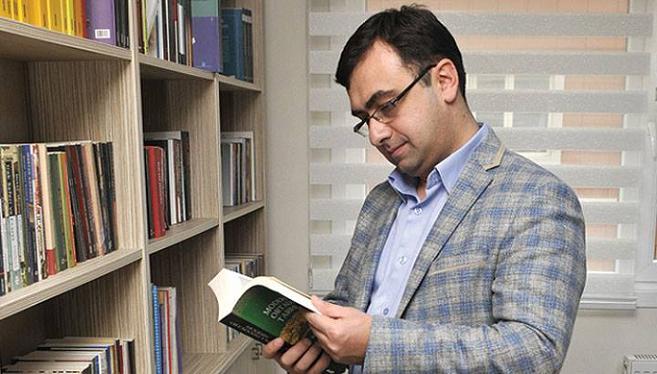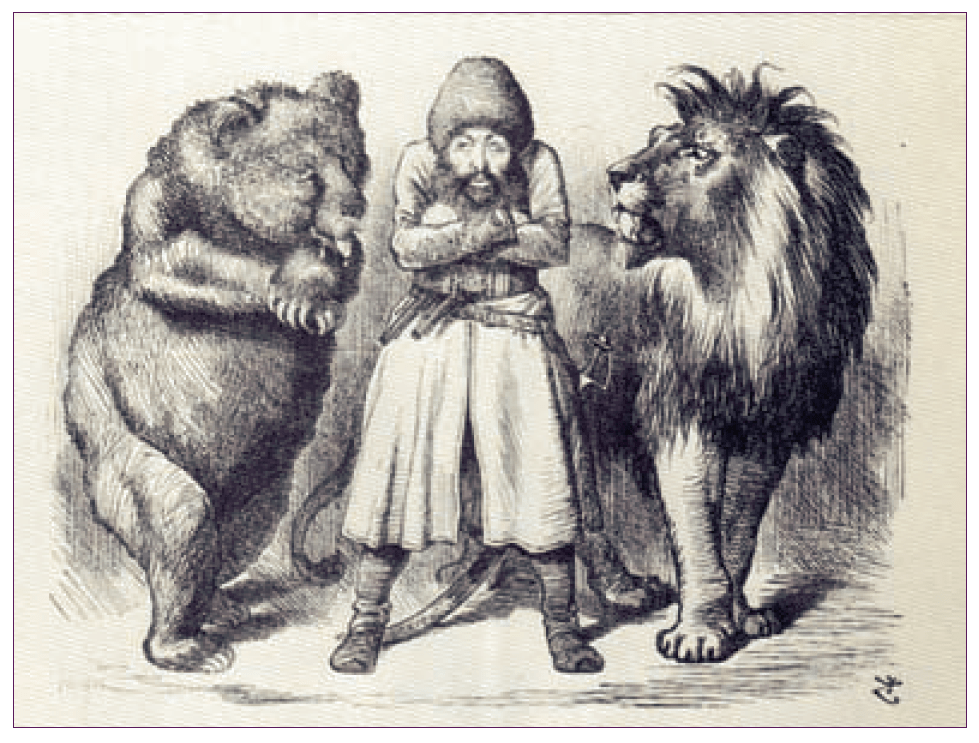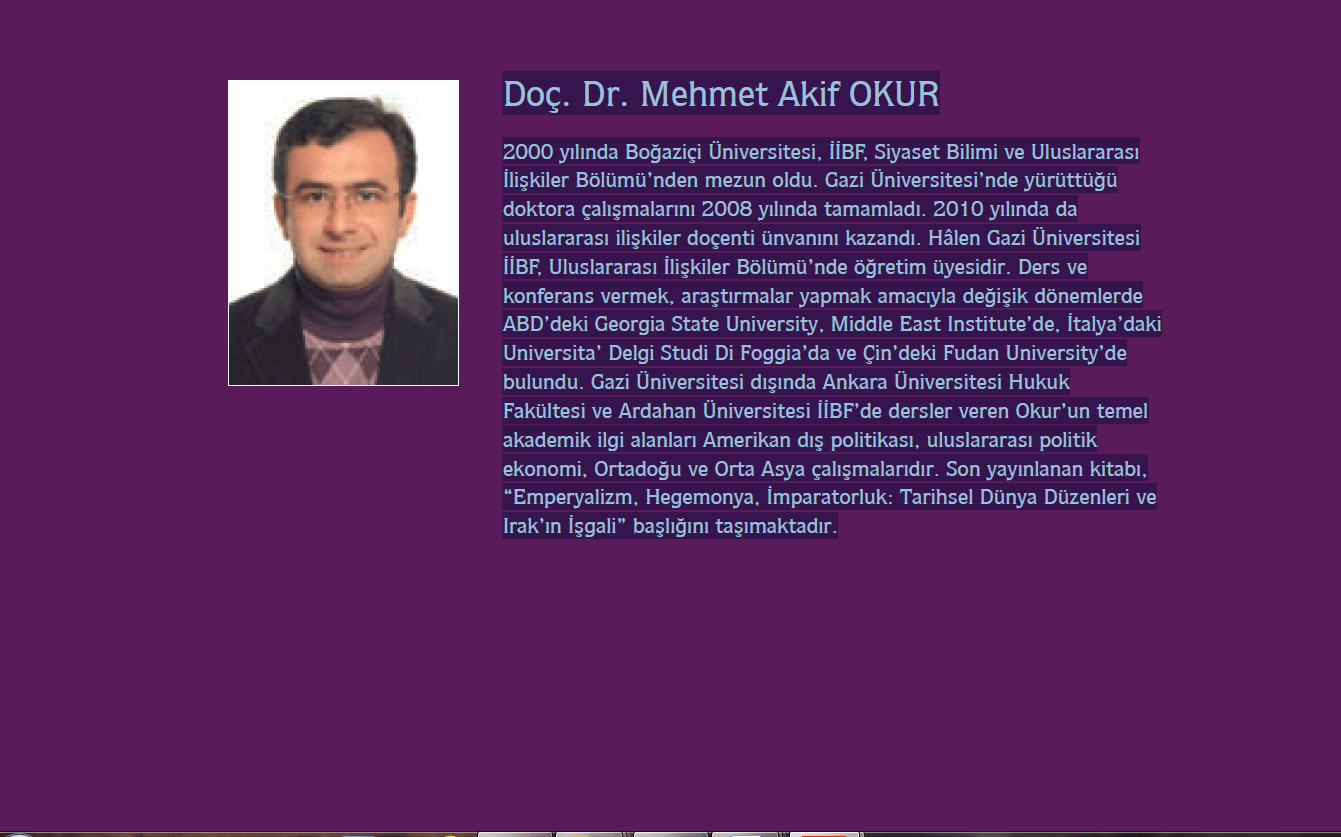Tarihten Geleceğe Orta Asya’nın Jeopolitiği Üzerine Değerlendirmeler
-RAPOR-

Doç. Dr. Mehmet Akif OKUR
…………………………..
SONUÇ
ORTA ASYA JEOPOLİTİK ÖNEMİNDEN KURTULABİLİR Mİ?
Bölgeyle en alt seviyeden bile olsa empatik ilişki kurma çabası göstermeksizin yazılmış birçok kitap ve makalede Orta Asya, analizlerin yalnızca arka planını süslemektedir. Bu metinlerde, Batı dışı dünyayı kendi kaderine hükmetmekten aciz, pasif ve irras¬yonel tutumlar sergileyen toplulukların yaşadığı, egzotik coğrafyalara indirgeyen ge¬leneksel oryantalist bakış açısının modern ve daha rafine versiyonları üretilmektedir.
Örneğin, “Büyük Oyun” metaforunun “yeni” ön ekiyle canlandırılması, Viktorya Çağı’nın kuvvetli ötekileştirici ikliminde hayat bulmuş kültürel imgelerle bezeli stra-tejik şemaları, geçmiş zamanın dehlizlerinden bugüne çağırmaktadır. Bölgeyi, gay¬rı medeni halklarla meskun, büyük güçlerin birbirleriyle rekabet ettikleri oyun/av alanlarından ibaret bir zemin hâlinde tasvir eden bu şemaların güncellenmeleri, Orta Asya’nın geleceği üzerine düşünen herkesi etkileyen bir dil atmosferi yaratmaktadır. Bu atmosfer, zihinlere, değişik biçimlerdeki emperyal eylemler zinciri tarafından tayin edilen geçmişin karanlık dönemlerine paralel gelecek tasavvurları ekmektedir.
Övgü gibi kullanılan “jeopolitik önem” ifadesi de, aslında benzer bir edilgenliği anlat¬maktadır. Coğrafyalara önem atfetmek, dünya politikasının rekabet hâlindeki temel unsurlarına mahsus bir imtiyazdır. Örneğin hiçbir analizde ABD’nin yahut Soğuk Sa¬vaş dönemi Rusya’sının jeopolitik öneminden bahsedilişine rastlanılmaz. Çünkü je¬opolitik önem bu ana aktörlere, yahut bunları yakından ilgilendiren çıkar alanlarına olan uzaklık/yakınlık gibi konumlar sayesinde kazanılır. Belirli geçit noktaları, boğaz¬lar vs. gibi coğrafyadan kaynaklanan somut farklılaşmalar ise “avantajları” oluşturur. Dünya sisteminin temel aktörleri, coğrafi avantajlara sahip olabilirler, ama bir başka gücün bu avantajlara politik önem atfetmesi düşünülemez. Bu avantajlar ancak kendi oyununu kuracak kudreti bulunmayan ülkelerin ellerinde toplandığında, esas oyun¬cuların ilgi göstererek pazarlık zemini yaratacakları “öneme” dönüşürler. Dolayısıyla, bir bölgenin küresel güç ilişkilerinin yönlendirici, merkezî öznesi mi, yoksa üzerin¬den strateji üretilen ikincil konumdaki nesnesi mi olduğu sorusunun cevabı jeopolitik önem dağıtıcılarla arasındaki ilişki tarafından belirlenir.
Bu yüzden Orta Asya’nın geleceği için temel bir stratejik hedef belirlenmek istenirse bu, bölgenin jeopolitik öneminden kurtarılması olmalıdır. Eğer dünya sisteminin fay hatlarında biriken enerjinin işaret ettiği gibi büyük depremlere gebe bir geleceğe gün be gün yaklaşılıyorsa, söz konusu amacın gerçekleşeceği güzergahta kol kola dolaşan yeni tehdit ve fırsatlarla karşılaşılacak demektir. Tehlikelerden uzak dururken, fırsat¬lardan istifade edebilmek için ise azimle ilerleyen adımlara kılavuzluk edecek bir ufka ihtiyaç duyulacaktır.
Son olarak, çalışmamızda değişik yönlerinin altını çizdiğimiz bu vizyonun ana parametrelerini tekrarlamak istiyoruz. Orta Asya’yı jeopolitik öneminden kurtaracak ira¬de, içeride öznenin restorasyonunu ve mekanda bütünleşmeyi sağlayacak girişimleri teşvik etmelidir. Dışarıda ise, rekabet üçgeninin faaliyetleri yüzünden bölgenin Bal¬kanlaşmasının önüne geçecek bir denge politikasının inşası gerekmektedir. Öznenin Anadolu’daki diğer koluyla tesis edilecek ilişkiler ise, içerideki ve dışarıdaki stratejiler yürütülürken, destek alınabilecek tek güvenilir dayanak noktasını oluşturmaktadır.

KAYNAKLAR
Adle, Chahryar ve Irfan Habib (2003). “Introduction”. History of Civilizations of Central Asia Volume V, UNESCO.
Adshead, Samuel Adrian Miles (1993). Central Asia in World History. Macmillan Press.
Amanov, Şatlık (2007). ABD’nin Orta Asya Politikaları. Gökkubbe.
Amineh, Mehdi Parvizi (2007). “Introduction: Theoretical and Methodological Approaches to the Study of the Greater Middle East”, The Greater Middle East in Global Politics, Social Science Perspectives on the Changing Geography of the World Politics. Der. M. Parvizi Amineh, BRILL.
Annanepesov, M. (2003). “Relations Between The Khanates and with Other Powers”, History of Civilizations of Central Asia, Volume V. UNESCO.
Bassina, Mark ve Konstantin E. Aksenovb (2006). “Mackinder and the Heartland Theory in Post-Soviet
Geopolitical Discourse”. Geopolitics, Volume 11, Issue 1.
Başer, Sait (1995). Kutadgu Bilig’de Kut ve Töre’den Sevgi Toplumuna. İstanbul: Seyran Kitapevi.
Beckwith, Christopher I. (1991). “The Impact of the Horse and Silk Trade on the Economies of T’ang
China and the Uighur Empire: On the Importance of International Commerce in the Early Middle Ages”.
Journal of the Economic and Social History of the Orient. Vol. 34, No. 3.
… (2009). Empires of the Silk Road: a History of Central Eurasia from the Bronze Age to the Present.
Princeton University Press.
Blake, Robert O., Jr. (2010). Robert O. Blake, Jr., Assistant Secretary, Remarks Before the Washington
International Business Council. U.S. Department of State, Bureau of South and Central Asian Affairs. 24 Şubat, 2010, http://www.state.gov/p/sca/rls/rmks/2010/137234.htm
… (2011). The Obama Administration’s Priorities in South and Central Asia. Houston, 19 Ocak 2011,
http://www.state.gov/p/sca/rls/rmks/2011/155002.htm#
Blank, Stephen (2007). US Interests in Central Asia and the Challenges to Them. Strategic Studies Institute, US Army War College, Carlisle, PA, March 2007. http://www.strategicstudiesinstitute.army. mil/pdffiles/PUB758.pdf
Bohr, Annette (2010). “Central Asia: Responding to the Multi-Vectoring Game”. America and a Changed World: A Question of Leadership. Der. R. Niblett. Wiley-Blackwell/Chatham House.
Brzezinski, Zbigniew (1997). The Grand Chessboard. American Primacy And It’s Geostrategic Imperatives. Basic Books.
Bromley, Simon (2007). “Connecting Central Eurasia to the Middle East in American Foreign Policy towards Afghanistan and Pakistan: 1979-Present”. The Greater Middle East in Global Politics, Social Science Perspectives on the Changing Geography of the World Politics. Der. M. Parvizi Amineh. BRILL. Chapman, Bert (2011). Geopolitics: A Guide to the Issues. ABC-CLIO.
Clarke, Michael (2009). “The ‘Centrality’ of Central Asia in World History, 1700-2008″. China, Xinjiang and Central Asia : History, Transition and Crossborder Interaction Into the 21st Century. Der. Colin Mackerras ve Michael Clarke, Routledge.
Council of the European Union (2007). EU and Central Asia: Strategy for a New Partnership. Brussels. http://www.consilium.europa.eu/uedocs/cms_data/librairie/PDF/EU_CtrlAsia_EN-RU.pdf
Cox, Robert W. ve Michael G. Schechter (2002). The Political Economy of a Plural World: Critical Reflections on Power, Morals and Civilization. Routledge.
Crews, Robert D. (2006). For Prophet and Tsar, Islam and Empire in Russia and Central Asia. Harvard University Press.
Curzon, George N (1892). Persia and the Persian Question. London: Longman& Co.
Cutler, Robert M. (2007). “US-Russian Strategic Relations and the Structuration of Central Asia”, The Greater Middle East in Global Politics, Social Science Perspectives on the Changing Geography of the World Politics. Der. M. Parvizi Amineh, BRILL.
Davutoğlu, Ahmet (1997). “Medeniyetlerin Ben-idraki”. Dîvân, Disiplinlerarası Çalışmalar Dergisi. 1997 / 1. Dickinson, Elizabeth (2009). “New Order: How “the Multipolar World” Came to be”. Foreign Policy. November/December 2009, http://www.foreignpolicy.com/articles/2009/10/19/new_order Dodds, Klaus (2007). Geopolitics: A Very Short Introduction Oxford. University Press.
Dugin, Aleksandr (2003). Rus Jeopolitiği: Avrasyacı Yaklaşım. Çev. Vügar İmanov, Küre Yayınları.
Ehteshami, Anoushiravan (Der.) (1994). From the Gulf to Central Asia: Players in the New Great Game. University of Exeter Press.
Ergin, Muharrem (1995). Orhun Abideleri. İstanbul: Boğaziçi Yayınları.
Ewans, Sir Martin (Der.) (2003). The Great Game: Britain and Russia in Central Asia. Routledge. Feigenbaum, Evan A. (2011). “Why America No Longer Gets Asia”. The Washington Quarterly. Spring 2011 Frank, André Gunder (1992). The Centrality of Central Asia. VU University Press, Amsterdam.
Frank, André Gunder (1998). ReOrient, Global Economy in the Asian Age. University of California Press. Foreign Relations of the United States, 1969-1976 Volume XVII, China, 1969-1972 (2006). Düz. Steven E. Philips, Department of State, Washington.
Gibbon, Edward (1988). Roma İmparatorluğu’nun Gerileyiş ve Çöküş Tarihi. III. Cilt. Çev. Asım Baltacı- gil. İstanbul: BFS Yayınları.
Gills, Barry K. ve Andre Gunder Frank (2003a). “Kümülatif Birikim”. Dünya Sistemi, Beş Yüz Yıllık mı? Beş Bin Yıllık mı?. Düz. Andre Gunder Frank ve Barry K. Gills, Çev. Esin Soğancılar, Ankara: İmge Kita- bevi.
………. (2003b), “Dünya Sisteminde Çevrimler, Krizler ve Hegemonik Değişiklikler (MÖ 1700 – MS 1700)”.
Dünya Sistemi, Beş Yüz Yıllık mı? Beş Bin Yıllık mı?. Düz. Andre Gunder Frank ve Barry K. Gills, Çev. Esin Soğancılar, Ankara: İmge Kitabevi.
Goh, Evelyn (2004). Constructing the U.S. Rapprochement with China, 1961-1974: From ‘Red Menace’ to ‘Tacit Ally’. Cambridge University Press.
Güngör, Erol (1996). “Teknoloji ve Kültür Değişmesi”. Kültür Değişmesi ve Milliyetçilik. İstanbul: Ötüken Neşriyat. Ingram, Edward (1992). Britain’s Persian Connection, 1798-1828: Prelude to the Great Game in Asia. Oxford and New York: Clarendon Press.
Hopkirk, Peter (1994). The Great Game: The Struggle for Empire in Central Asia. Kodansha International. Kissinger, Henry (2000). Years of Renewal, The Concluding Volume of His Memoirs. Touchstone: Simon and Schuster
Klyashtorny, S. G. (1996). “The Second Türk Empire (682-745)”, History of Civilizations of Central Asia, Volume III, The Crossroads of Civilizations: A. D. 250 to 750, B. A. Der. Litvinsky Zhang Guang-da and R. Shabani Samghabadi. UNESCO Publishing.
Koenigsberger, H.G. (1989). Medieval Europe 400-1500. Hong Kong: Longman.
Korkmaz, Vişne (2004/2005). “Tarihsel Gelişim İçerisinde Avrasyacı Hareket ve Öğreti, Klasik ve Yeni Avrasyacılık”. Akademik Araştırmalar Dergisi. Kasım 2004-Ocak 2005
Kühnhardt, Ludger (2010). Region-Building: The Global Proliferation of Regional Integration, Vol: 1. New York, Oxford: Berghahn Books.
Laruelle, Marlène ve Sébastien Peyrouse (2011). “The United States in Central Asia: Reassessing a Challenging Partnership”. Strategic Analysis. Vol. 35, No. 3, May 2011
Lee, Jesse (2009). “In Russia, Defining the Reset”. The White House Blog. July 06, 2009, http://www.whitehouse.gov/blog/In-Russia-Defining-the-Reset/
Litvinsky, B. A. ve Zhang Guang-da (1996a). “Historical Introduction”. History of Civilizations of Central Asia, Volume III, The Crossroads of Civilizations: A. D. 250 to 750, B. A.. Düz. Litvinsky Zhang Guang-da and R. Shabani Samghabadi. UNESCO Publishing.
… (1996b).”Central Asia, The Crossroads Of Civilizations”. History of Civilizations of Central Asia,
Volume III, The Crossroads of Civilizations: A. D. 250 to 750, B. A.. Düz. Litvinsky Zhang Guang-da and R. Shabani Samghabadi. UNESCO Publishing.
Mackinder, Halford John (1904). “The Geographical Pivot of History”. The Geographical Journal Vol. 23, No. 4. Mackinder, Halford John (1919). Democratic Ideals and Reality: A Study In The Politics Of Reconstruction. London: Constable and Company Ltd.
… (1943). “The Round World and the Winning of the Peace”. Foreign Affairs, Vol. 21, No. 4.
Mahan, Alfred Thayer (2003). The Problem of Asia: Its Effect upon International Politics (Francis P. Sempa’nın önsözüyle). Transaction Publishers.
Marvin, Charles Thomas (1891). The Region of the Eternal Fire; an Account of a Journey to the Petroleum Region of the Caspian in 1883. London: W. H. Allen & Co.
Meyer, Karl Ernest ve Shareen Blair Brysac (2006). Tournament of Shadows: The Great Game and the Race for Empire in Central Asia. Basic Books.
Millward, James A. (2007). Eurasian Crossroads: A History of Xinjiang. Columbia University Press. Mukminova, R. G. (2003). “The Janids (Astarkhanids)”. History of Civilizations of Central Asia, Volume V. UNESCO.
Mullerson, Rein (2007). Central Asia: A Chessboard and Player in the New Great Game. Columbia University Press.
Myer, Will (2002). Islam and Colonialism, Western Perspectives on Soviet Asia. RoutledgeCurzon. Nichol, Jim (2011a). Central Asia: Regional Developments and Implications for U.S. Interests. CRS Report for Congress. Congressional Research Service.
… (2011b). Central Asia’s Security: Issues and Implications for U.S. Interests. CRS Report for Congress. Congressional Research Service.
Nikolaev, Sergei (2011). “Central Asia in Geopolitics: The American Vector (1991-2008)”. International Affairs, A Russian Journal of World Politics, Diplomacy and International Relations. No. 2.
O’Hara, Sarah, Michael Heffernan ve Georgina Endfield (2005). “Halford Mackinder, ‘The Geographical Pivot’ and British Perceptions of Central Asia”. Global Geostrategy: Mackinder and the Defence of the West. Der. Brian W. Blouet, Routledge.
O’Hara, Sarah ve Michael Hefferman (2006). “From Geo-Strategy to Geo-Economics: The ‘Heartland’ and British Imperialism Before and After MacKinder”. Geopolitics. 11:1.
Okur, Mehmet Akif (2008). “Millet İmparatorluklar Çağı’nın Eşiğinde: Genişleyen Dünyada Küresel Kapitalizmin Yeni Mimarisine Doğru”. (Der.) Murat Saraçlı, Küreselleşmeden Postküreselleşmeye, Değişim Sürecindeki Dünya Düzeni ve Türkiye. Ankara: Lotus Yayınevi.
… (2010). Emperyalizm, Hegemonya, İmparatorluk: Tarihsel Dünya Düzenleri ve Irak’ın İşgali. Ankara: A Kitap.
Orange, Richard (2010). “Kazakhstan Shuns London for Hong Kong”. The Telegraph. 15 Kasım 2010 Özel, Saruhan (2011). “Dünya artık sadece ABD ve Avrupa değil…”. Zaman. 24.08.2011.
Peyrouse, Sébastien (2011). “Russia-Central Asia: Advances and Shortcomings of the Military Partnership”. Central Asian Security Trends: Views From Europe and Russia. Der. Stephen J. Blank, Strategic Studies Institute.
Pieterse, Jan Nederveen (2004). Globalization or Empire? London: Routledge.
Polelle, Mark (1999). Raising Cartographic Consciousness: the Social and Foreign Policy Vision of Geopolitics in the Twentieth Century. Lexington Books.
Pomfret, Richard (2007). “Central Asia since the Dissolution of the Soviet Union: Economic Reforms and Their Impact on State-Society Relations”, The Greater Middle East in Global Politics, Social Science
Perspectives on the Changing Geography of the World Politics. Der. M. Parvizi Amineh, BRILL.
Radtke, Kurt W. (2007). “China and the Greater Middle East: Globalization No Longer Equals Westernization”. The Greater Middle East in Global Politics, Social Science Perspectives on the Changing Geography of the World Politics. Der. M. Parvizi Amineh. BRILL.
Rahimov, Mirzohid (2007). “From Soviet Republics to Independent Countries: Challenges of Transition in Central Asia”. The Greater Middle East in Global Politics, Social Science Perspectives on the Changing Geography of the World Politics. Der. M. Parvizi Amineh. BRILL.
Rozman, Gilbert (2010). Chinese Strategic Thought Toward Asia. Palgrave Macmillan.
Sempa, Francis P. (2002). Geopolitics: From the Cold War to the 21st Century. Transaction Publishers. Shun-ying, Mu ve Wang Yao (1996). “The Western Regions (H S I -Yü) Under The T’ang Empire and The Kingdom of Tibet”. History of Civilizations of Central Asia, Volume III, The Crossroads of Civilizations: A. D. 250 to 750, B. A. Der. Litvinsky Zhang Guang-da and R. Shabani Samghabadi. UNESCO Publishing.
Siegel, Jennifer L. (2002). Endgame: Britain, Russia and the Final Struggle for Central Asia. London and New York: I. B. Tauris.
Sinor, Denis (1997). Inner Asia. RoutledgeCurzon.
Spykman, Nicholas John (1944). The Geography of the Peace. Düz. Helen R Nicholl. Yale University, Institute of International Studies. New York: Harcourt, Brace and Co.
Starr, S. Frederick (2002). Contributions of Central Asian Nations to the Campaign Against Terrorism, Hearing Before The Subcommittee on Central Asia and South Caucasus of the Committee on Foreign Relations, United States Senate, One Hundred Seventh Congress First Session, December 13, 2001, U. S. Government Printing Office, Washington, 2002, http://ftp. resource. org/gpo. gov/ hearings/107s/77602. txt
………. (2005). A ‘Greater Central Asia Partnership’ for Afghanistan and Its Neighbors. Silk Road Paper,
Central Asia-Caucasus Institute & Silk Road Studies Program – A Joint Transatlantic Research and Policy Center, Washington: Johns Hopkins University-SAIS.
Tanner, Harold Miles (2009). China: A History. Hackett Publishing
The Economist (2006).“Coming of Age”. The Economist. Vol. 378, Issue 8461, 1/21/2006, (Erişim) http://search.ebscohost.com/login.aspx?direct=true&db=a9h&AN=19491983&site=ehost-live, 17 Ekim 2006
The International Monetary Fund (2011). World Economic Outlook Database. (April 2011), http:// www.imf.org/external/datamapper/index.php
The Quarterly Review (1865). “The Russians in Central Asia”. The Quarterly Review. Çev. John ve Robert Michell, Vol. 118, July & October 1865.
The White House (2006). The National Security Strategy of the United States of America. Washington. 16 March 2006.
Thorndike jr., Joseph J. (1942). “Geopolitics, The Lurid Career of a Scientific System Which A Briton Invented, The Germans Used and Americans Need to Study”. Life, 21 December.
Thornton, Richard C. (2001). Nixon-Kissinger Years: The Reshaping of American Foreign Policy. Paragon House.
Togan, I. (2003). “The Epic Tradition and Historical Literature in Turkic”. History of Civilizations of Central Asia, Volume V. UNESCO.
UNDP (2005). Human Development Report for Central Asia 2005, Central Asia Human Development Report. Bringing Down Barriers: Regional Cooperation for Human Development and Human Security.
http:/hdr.undp.org/docs/reports/regional/CIS_Commonwealth_of_Independent_States/Central_
Asia_2005_en.pdf
Yagi, Takeshi (2007). “Central Asia Plus Japan” Dialogue and Japan’s Policy Toward Central Asia”. Asia Europe Journal. Volume 5, Number 1.
Yazar, Yusuf (2011). Enerji İlişkileri Bağlamında Türkiye ve Orta Asya Ülkeleri. Ahmet Yesevi Üniversitesi. Ankara: 2011.

